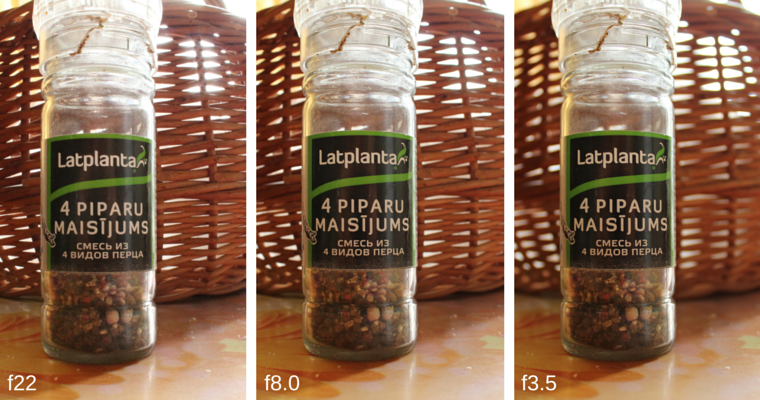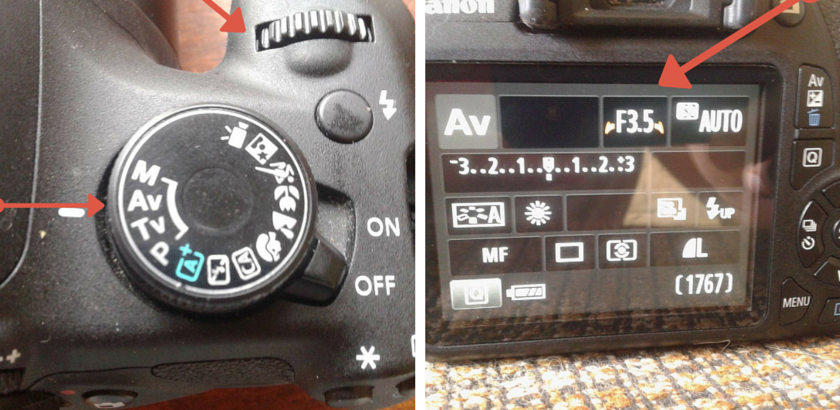With this post I'm starting a new and hopefully very interesting blog category - Digital Photography School on my blog (www.reinisfischer.com). The reason that made me to create such new category is simple - some time ago I bought my first DSRL camera - Canon 1200 D (in US it's marketed under Canon Rebel T5 brand), read my first impression of this camera: First Impressions Of Canon EOS 1200D Camera With 18-55mm Lens
[amazon:B00IB1BTWI:full]
Prior to that for many year I have been using a bridge camera Sony DSC-H7 and I was pretty pleased with result what I got. Although that bridge camera offers some control over picture you take, for 99% of time I have been using program A (auto). Before I bought a new DSLR camera I thought - the only difference between bridge camera and DSLR camera are that with DSLR camera I can take better quality pictures, it has more megapixels and yes, there is some lens attached.
[amazon:B000M4J2PI:full]
After making a few shots with my brand new DSLR camera I realized that with program A I can make photos look worst than taken with bridge camera and I decided to investigate what's wrong with that. I was lucky enough I have a friend who is a photo geek and he give me a few very useful lessons for photography beginners, like what does aperture actually means, what is an exposure, what is ISO, he told me that DSLR beginners finds program P (program) best for learning their new equipment. Thanks to his advices by now I feel a bit educated on how to take decent photos in P mode with my Canon 1200D camera. Thank you Johann for these great tips!
Continue reading and you will learn what is an aperture, what is f-stop and how to shot in Aperture Priority mode
Disclaimer: This post contains affiliate links, to Amazon.com, by clicking on links on this page and by making a purchase on Amazon site, I will earn an affiliate income from that. Prices for any items on this post is retrieved by using Amazon Product Advertising API and is updated daily.
What is aperture?
Ok, I believe to understand what actually is aperture is pretty easy - this article on Wikipedia is pretty self-explanatory:
In optics, an aperture is a hole or an opening through which light travels. More specifically, the aperture and focal length of an optical system determine the cone angle of a bundle of rays that come to a focus in the image plane. The aperture determines how collimated the admitted rays are, which is of great importance for the appearance at the image plane. If an aperture is narrow, then highly collimated rays are admitted, resulting in a sharp focus at the image plane. If an aperture is wide, then uncollimated rays are admitted, resulting in a sharp focus only for rays with a certain focal length. This means that a wide aperture results in an image that is sharp around what the lens is focusing on. The aperture also determines how many of the incoming rays are actually admitted and thus how much light reaches the image plane (the narrower the aperture, the darker the image for a given exposure time). In the human eye, the pupil is the aperture.
Now, what you should really pay attention to is: If an aperture is narrow, then highly collimated rays are admitted, resulting in a sharp focus at the image plane. If an aperture is wide, then uncollimated rays are admitted, resulting in a sharp focus only for rays with a certain focal length. This means that a wide aperture results in an image that is sharp around what the lens is focusing on.
How to control aperture?

F steps
Ok, it's another interesting term you should learn - F steps:
In optics, the f-number (sometimes called focal ratio, f-ratio, f-stop, or relative aperture) of an optical system is the ratio of the lens's focal length to the diameter of the entrance pupil. It is a dimensionless number that is a quantitative measure of lens speed, and an important concept in photography. The number is commonly notated using a hooked f, i.e. f/N, where N is the f-number.
In illustration above I have used my kitchen table, pepper mixture and the basket, to demonstrate how most common f-stops differs and actually looks. I believe if you are into a food photography, like you are running food blog you will find smaller f-stops works best for you.

Depending on your camera model, further written may vary, but for most DSLR cameras it will be common - just the naming will differ, so for example, Nikon uses P for Program, A for Aperture Priority, S for Shutter Priority, and M for Manual Mode. Canon instead uses P for Program, Av for Aperture Priority, Tv for Shutter Priority and M for Manual mode.
Switch your camera to Aperture Priority, turn on LCD display (or you can use viewfinder) and roll the trigger button on front of your camera to change aperture and ... make a few tests.
For the last 3 months I have been using both P and Av modes in combination to make some better photography. Visit photos to see my work.
Further reading:
Bellow I have listed a few most popular beginner photography books you could by on Amazon to master your DSLR skills:
[amazon:1118722965:full]
[amazon:0988263408:full]
[amazon:081740502X:full]
Thank you for reading, leave a comment, like my page on Facebook and let's meet next Tuesday on another Digital Photography school lesson